Part 1 – From Kavos to Fisherman’s Cabin
Corfu (Kerkyra, Κέρκυρα) is a Greek island in the Ionian Sea, which I visited in October 2019. The goal was to pass the 220 km long trail leading from the southernmost tip of the island to its northern end.
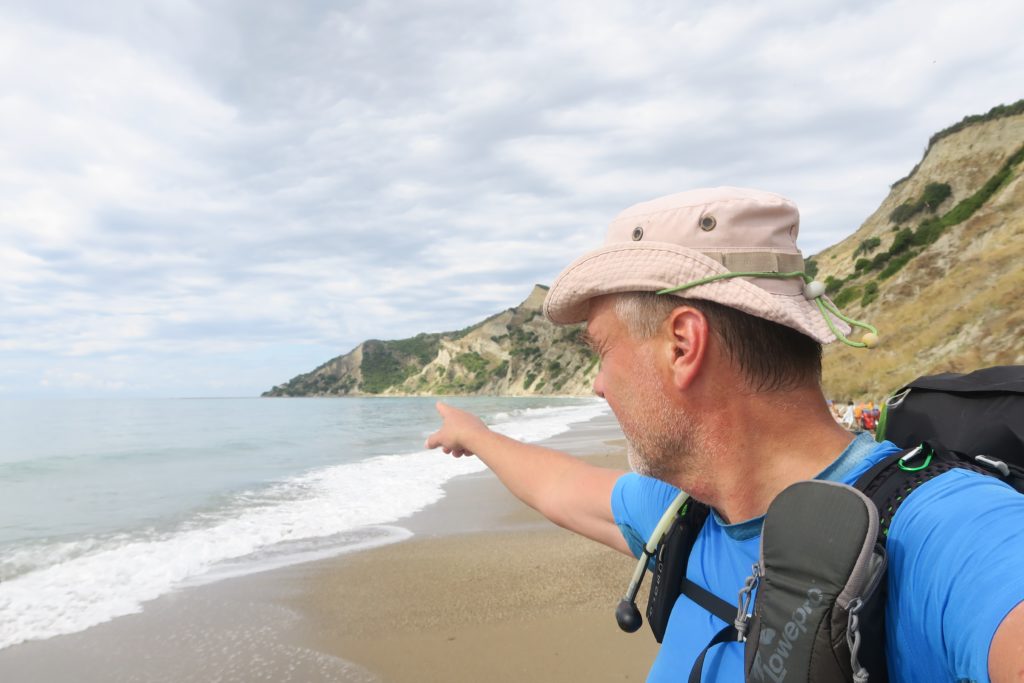
There and Back Again
At Vienna airport, I arrived by train from Brno already on Saturday, because the flight to Corfu flew Sunday 6. September at 5:45, so I decided to sleep on the spot.
You could camp wild everywhere, just be late to come and leave soon. This was achieved in this case for 100%.
I arrived at the airport at half-past eight, to find a suitable place in the park close to the airport covered by trees took me till quarter past nine. I set the alarm on my clock to half-past three. In a quarter to five, I was already at the counter to the check-in desk.
I decided to check-in my backpack, not to get my knife stolen again at check-in. But, as you read further, it was almost useless measure. 🙁
From Corfu, I flew again to Vienna and then the train back to Brno.

About the Trail
The Corfu Trail was created by Hilary Paipeti in 2001. Its official site is http://www.thecorfutrail.com and its guide can be ordered in electronic form at http://www.corfutrailguide.com for €10.
I admit that the guide gave me a little disappointed, so I took the amount as a contribution to the author of the trail, which did a huge piece of work, keeps the marking and the trail updated.
The route runs from Kavos on the southern tip of the island and ends in Agios Spiridon in the north.
One variant had a part of the trail between Kalami and Barbati, which I went separately and I describe it further.
Day 1 – Kavos > Lefkimmi
To the airport in Corfu on the island of Corfu, thanks to the early departure from Vienna and the time shift (to Corfu in summer CET + 1h), I arrived at 8:35 and walked to the bus station. After breakfast from the local buffet, I sat on the bus to Kavos. I went to the final station together with other travellers. Because I had 19 kilometres before me, I did not hesitate to have a brunch in the local restaurant and I filled the camel bag with water.
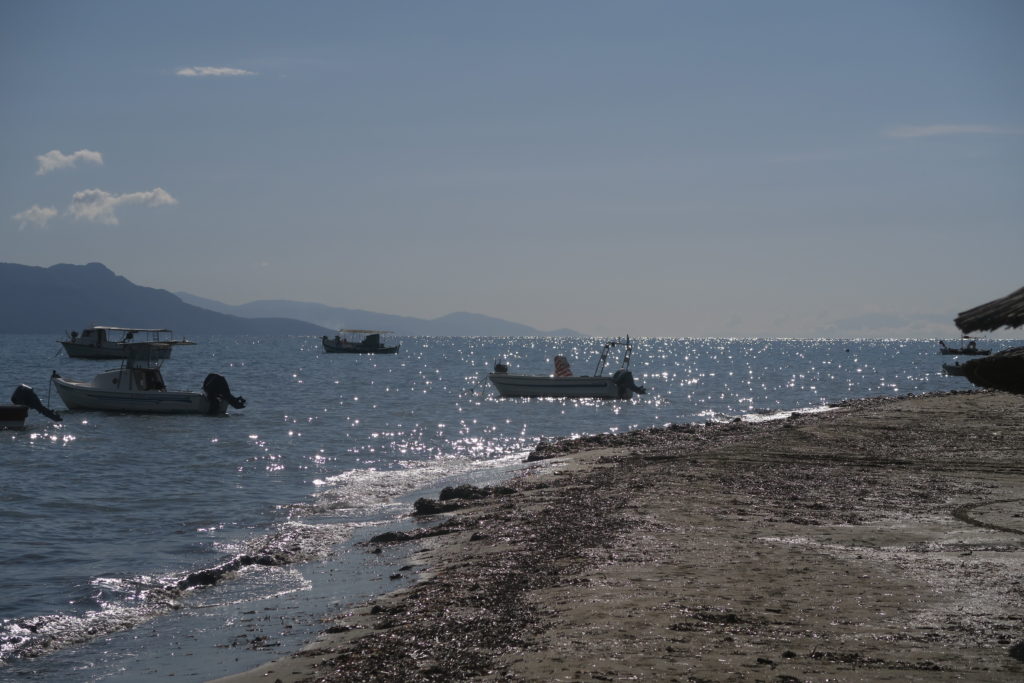
After a brief conversation with the barkeeper, I set out on a route that leads South and the Cape of Asprokavos turns north. The trail direction from south to North has the advantage of having the sunshine in your back. I appreciated it in October, but in summer it is crucial.
Corfu lies in the subtropics, but there is a relatively large humidity and it rains more often than elsewhere in Greece. Houses without a roof (lower tax) are in Greece but on Corfu, I found hardly one. It rained one day before my arrival and on the way it was still visible.

The first stop on the way is the Monastery of the Blessed Virgin Mary. The ruins of the Orthodox monastery are still frequented by believers.
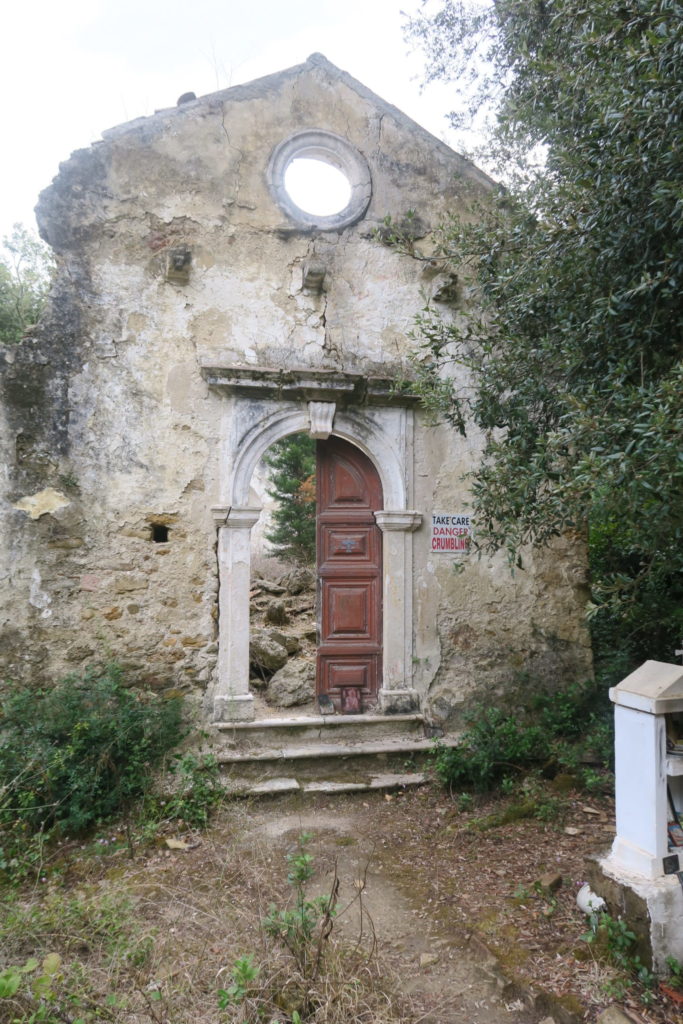
The next trail converges to the sea where the explorers still enjoy the autumn Greek sunshine and some of them swim-including myselves.
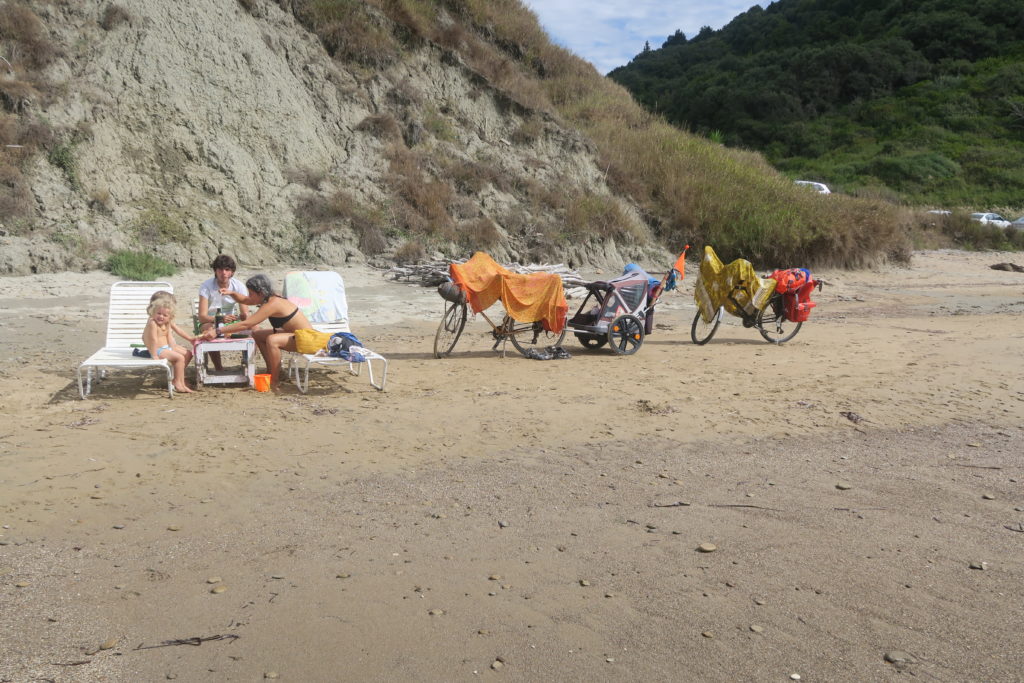
On the beach, I see other hikers which I already I met in the bus.
The Dutch “grandmother” – when I tell her my plan to camp wild, regrets that she didn’t take a sleeping bag and seems he would be happy to join me. Along the way, he collects plastics and this way he contributes to the fight for the purity of the seas – a respectable woman.
The Czech-Mexican couple flew with me from Vienna and then shared a bus to Kavos. We hang out for a while and then we go on the road. Although they travelled from Prague all night and their backpacks don’t look lite, they rested for a while on the beach and then start quickly and I never saw them again.

From the sea, I climb into the hills. In the bar Bella Vista in Spartera I meet the Dutch grandmother Catherine again.
There is another Czech couple. They moved to Corfu to enjoy the warm weather in autumn. According to their own words, they used to go to the Canarian Isles before, but they said there has been banned wild camping under a large fine. Additional to this they were chased by local smugglers. The whole problem began when two boys, who participated in the smuggling, stole their cellphone. It was a mistake because another friend of them was under police supervision and therefore the police followed also their phone and in this way, the police discovered not only the stolen phone but also the thieving smugglers. A crazy story.

We said goodbye and I continue thru olive groves with lots of flowering crocuses to the town of Lefkimmi. I came there in the early evening and sit in one of the local restaurants on the romantic waterfront for dinner. Stifado and red wine were excellent.
After eating, I paid and left in the coming twilight, to look for today’s bivvy.
Tired on the way and fifteen hours on the road, I lay under the crown of olive tree and sky full of stars. Grandma Cahrin would be excited 🙂 .

Day 2 – Lefkimmi > Agios Georgios
In the morning I eat from my stock at the place of the bivouac and I go back to the west coast of Corfu. There are blackberries along the way. They are, compared to ours, half in the size and have much less juice. Along the houses are still here and there the late grapes. In driest places, the path is drilled through the entrances to the anthills.

Blackberries – size up to 1 cm 
Ripening olives 
Anthill in the way. 
Last grapes
When I walk out of the olive groves, a view to beaches opens in front of me, along which I’m coming to Agion Georgios.

I swim, pack my sneakers and pull the sandals on. The best way to go along the beach is to use sand on the sea border.
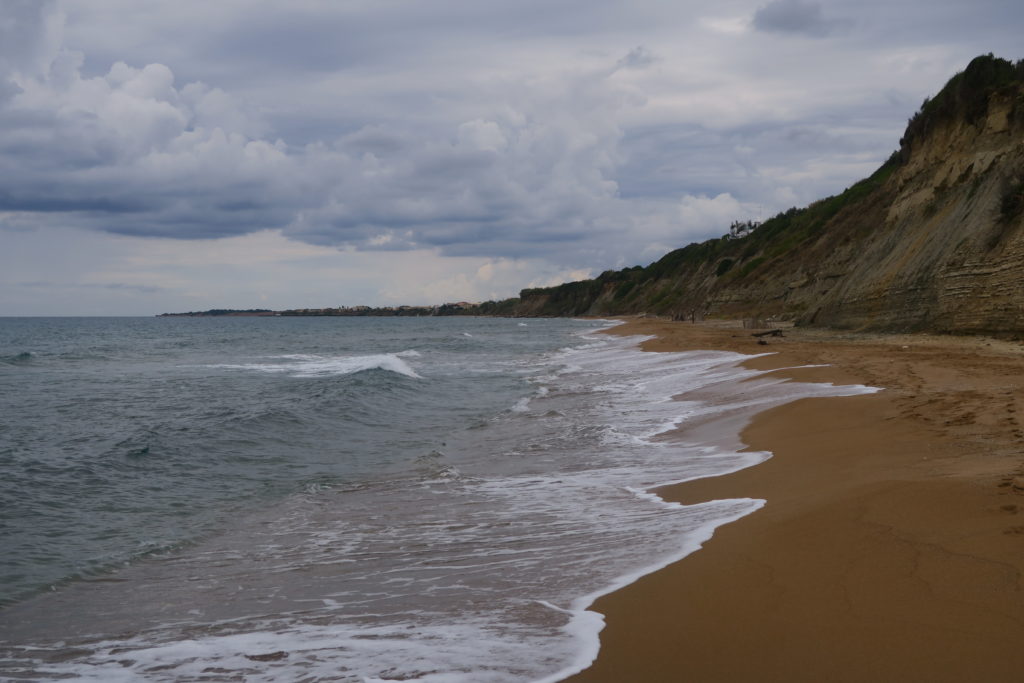
In Agios Georgios I have lunch in the seafront restaurant.
Rain began to fall from clouds that had long been preparing for rain. I re-evaluate my plans and look for accommodation recommended to me by a lady in the tavern. It looked pretty, but outside my budget. €40 is quite a lot at after season, although the rain 🙂 . After a brief survey on the internet, I find the apartment for half that price. I’m bought something to eat and get ready for bed zzZ.
Day 3 – Agios Georgios > Ano Pavliana
In the morning I see a blue sky and start my way along the coast.

The trail runs between huge dunes covered with bushes gradually thickening towards to Lake Korission.
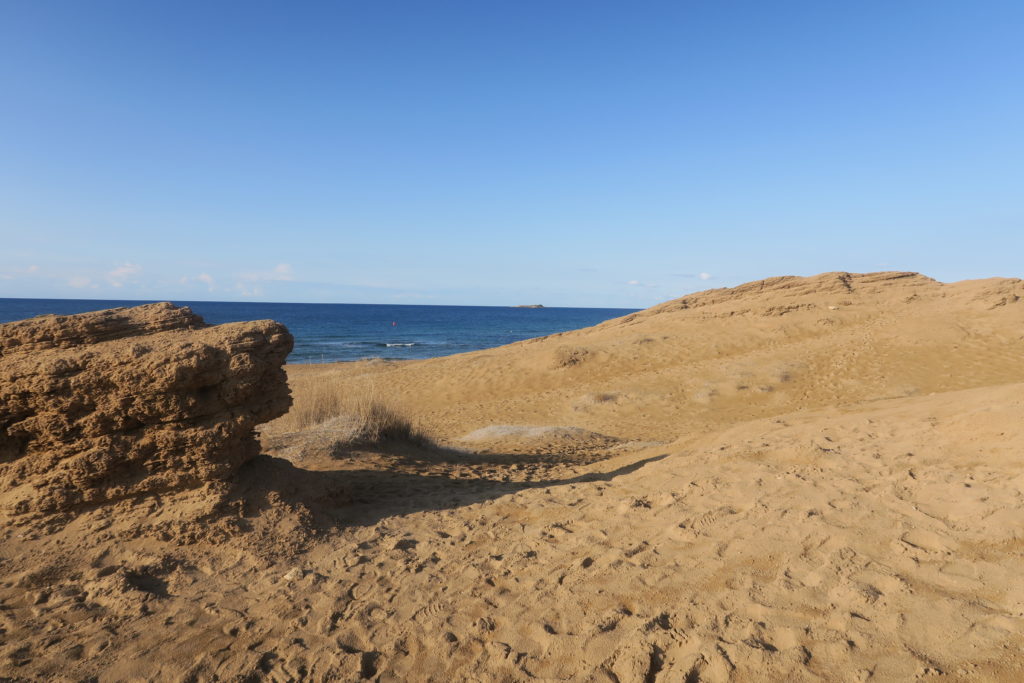
The verbal description of the journey in the guide from Hillary is not very guiding:
“Keep going inland for a couple of minutes then, bearing left, carry on through the sporadic juniper bushes (hard walking on the soft sand) until you hit a ‘wall’ of denser forest made up of holm oak and evergreens…”
I follow the paths between the juniper trees until the one, I have chosen, finishes.
According to the GPS, I’m close to the trail. I make my way through bushes, and between the juniper trees, I found a printout of Hillary’s guide, threw by someone in despair, only ten meters from the trail :).
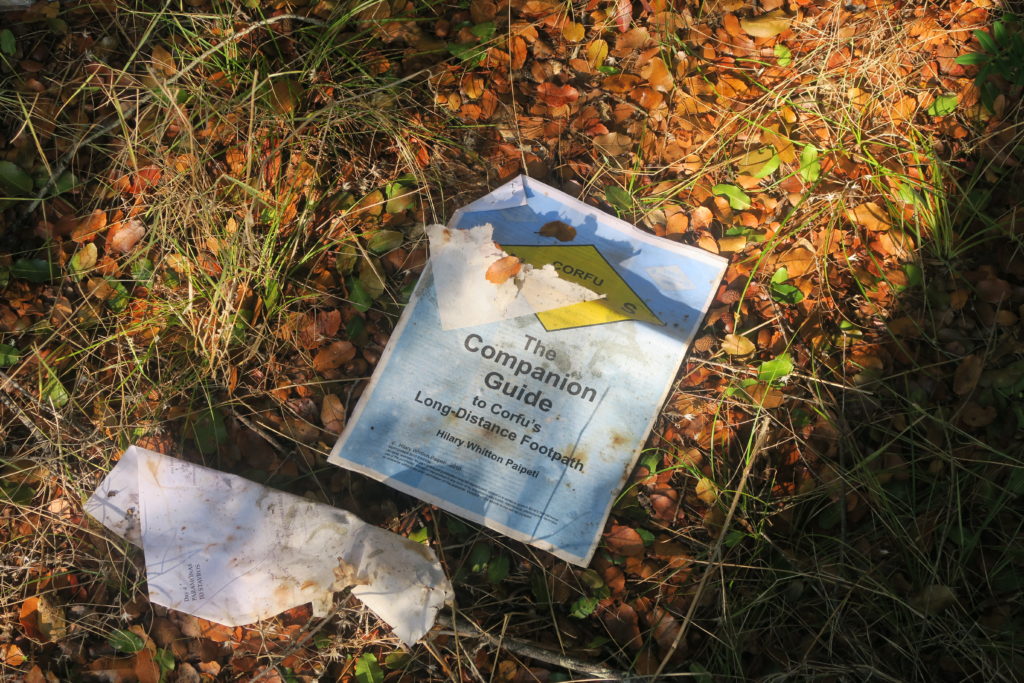
There are flocks of birds on the lake and I take pictures of flamingos

At the canal, that drains the water from the lake, stands a fisherman’s house and one of the fishermen has just cleaned the nets.

Already behind Agios Georgios, I met 2 girls who seemed to walk the Corfu trail too.
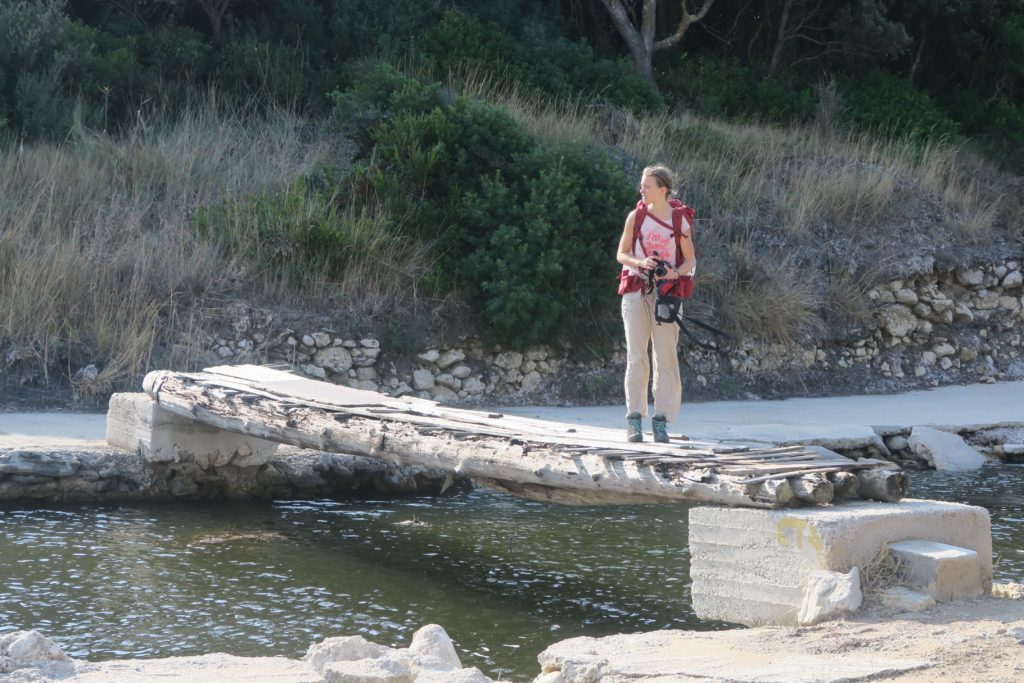
The lake ends and I enter again the into the olives. Among the trees, I can see nets for easier collection of olives. Outside the harvest, the Greeks mostly pack them into bundles and stretch them just before harvesting.
In the village of Paramonas, I stay at the Plori Tavern for dinner. After a while, both sympathetic sisters from Germany come and we chat. On my trip, I met them several times and we exchanged our travel experience. They sleep under the roof, so I pass on my experience sleeping outside.
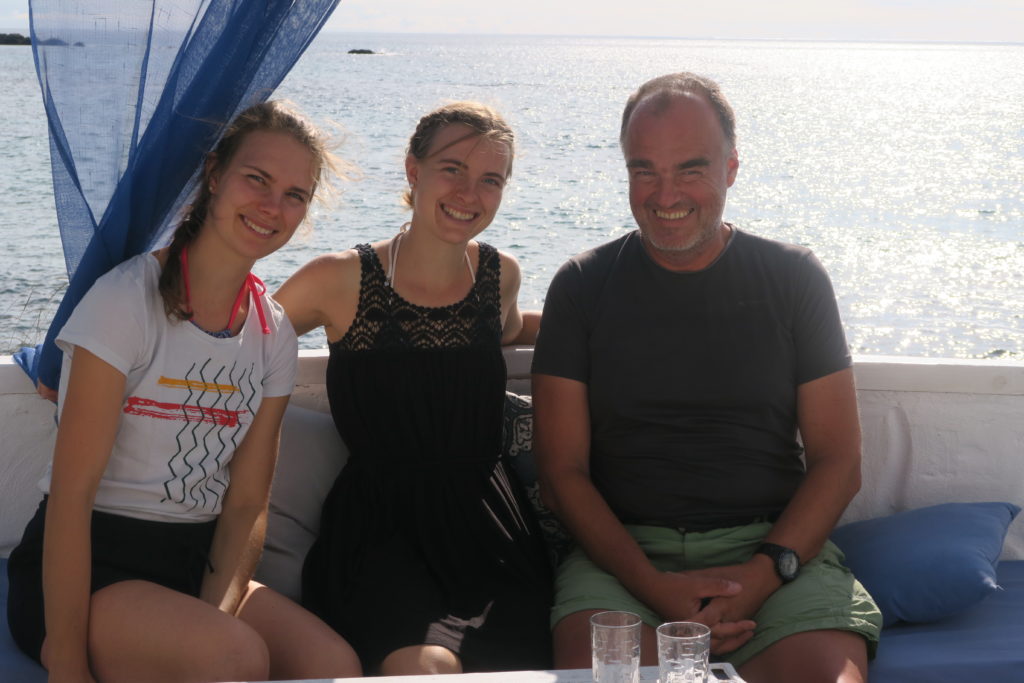
While the girls stayed asleep in the village, I ascend to the mountains.
In Corfu, water is distributed everywhere. They often have a tap near the property, so you can replenish water and don’t need to pull unnecessarily litres in your backpack. In addition, there are often fire hydrants in olive groves.
I tie up my hammock between olive tres on the ridge and I’m getting ready to sleep. “Bathroom” is across the path, so evening hygiene is no problem and before bedtime, I take pictures of the magnificent sunset.
Day 4 – Ano Pavliana > Ano Garouna
After the morning hygiene at the tap, I went downhill to the village of Ano Pavliana and joined the local gentlemen in front of the shop/café and have breakfast.
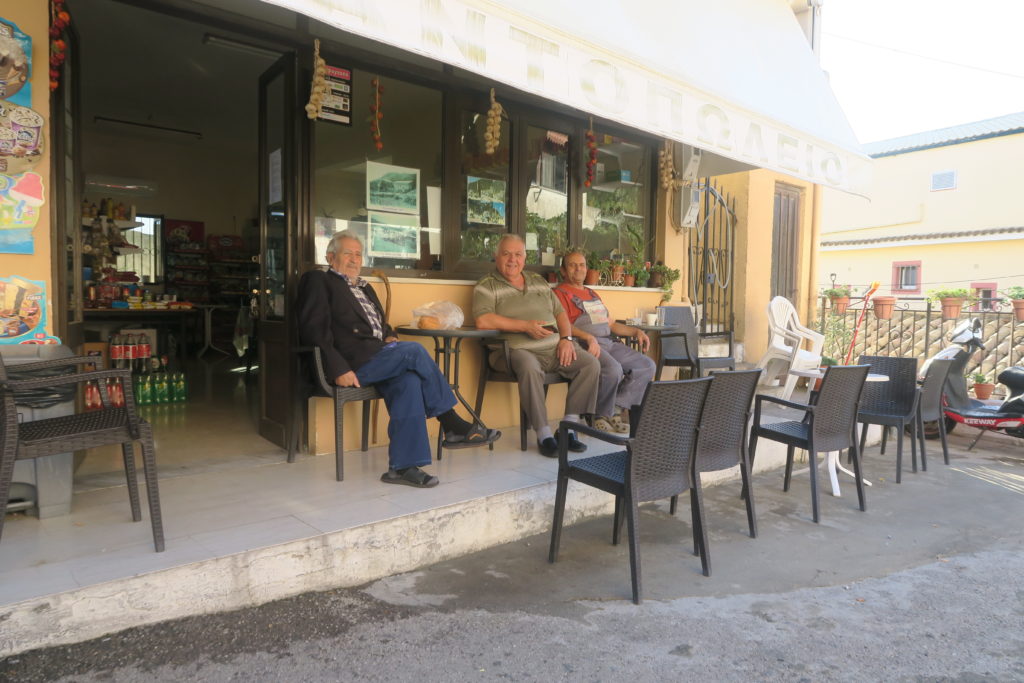
As I walk through the village, I missed the branch, but I did not regret – the local carpenter and carver in one was at work.
The road led further down the hill between olives and gardens with turkeys, sheep and goats.
I stopped by the Greek grandmother, who complained about the heavy deal and asked for little support that I will gladly provide.
In Vouniatades I drank a beer in the shop and went inland.

Stroggili – according to the scientists from Dresden, the olives are up to 1.200 years old.
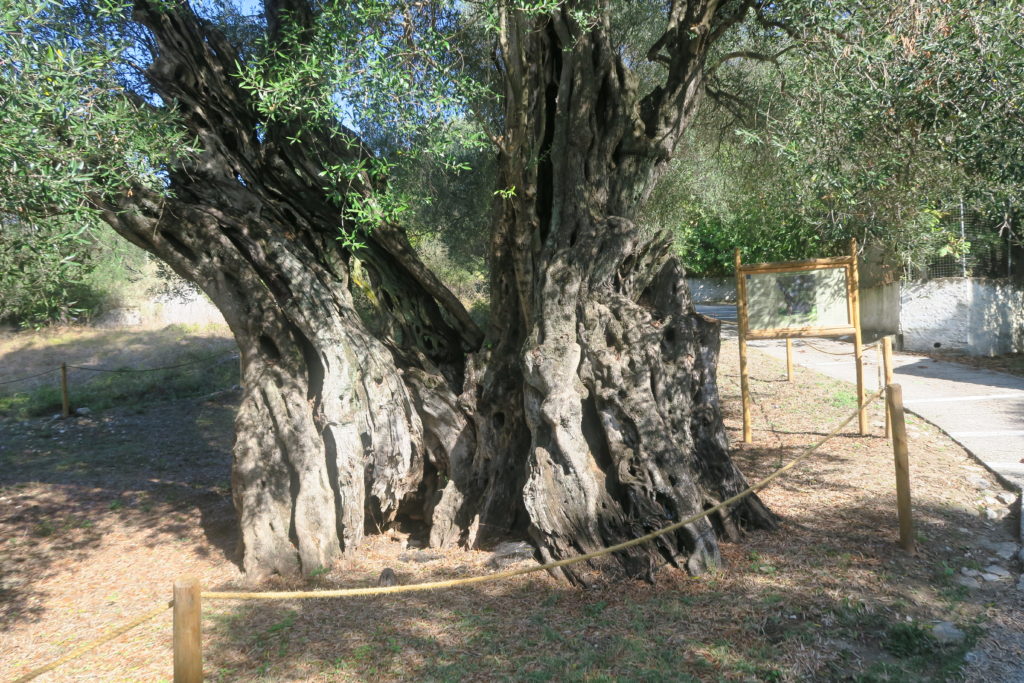

After I passed the church, I climb further up the hill to Kostas’s Bar “Walkers Point”. From the hill above is a beautiful view of the northern half of the island and the city of Corfu.
I’m having lunch and after some while, my German girlfriends arrive. We talk and then I continue my journey and they stay over night.
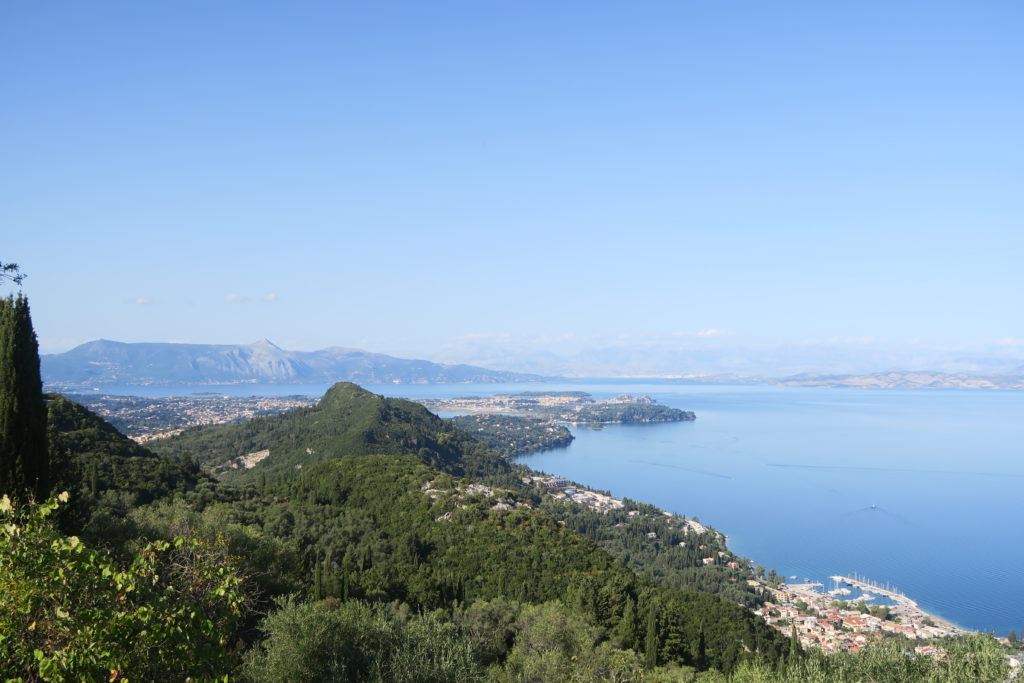
The picturesque churches are scattered throughout the island.

I go further across the valley to the monastery on Agioi Deka Pantokratoras above the village of Ano Garouna. In the monastery garden, I wash my T-shirt and stay overnight next to the chapel.

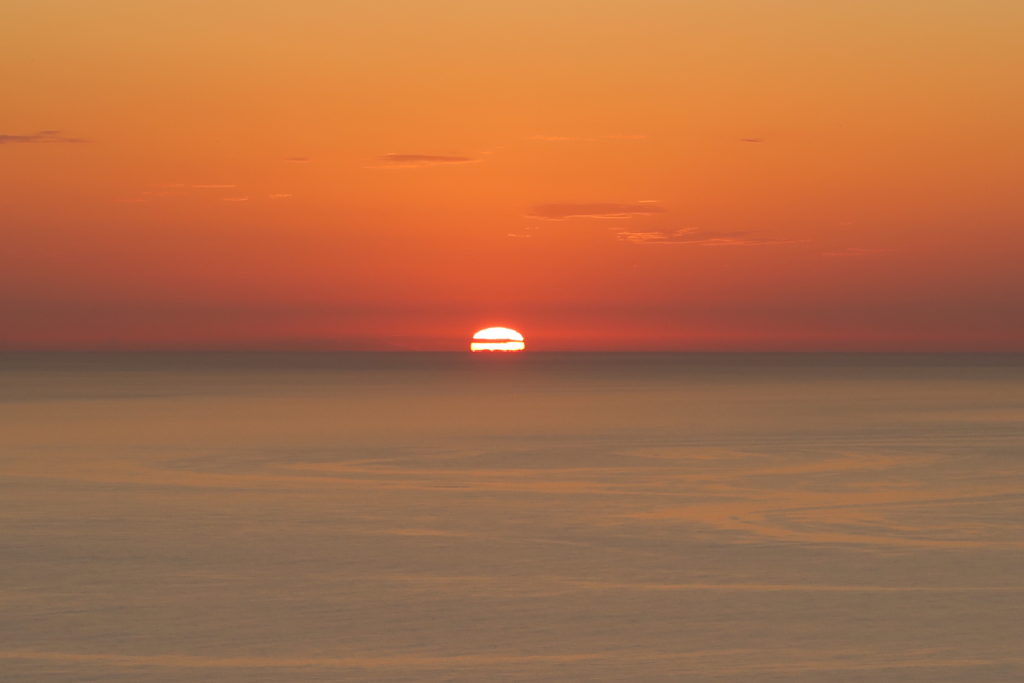
Day 5 – Ano Garouna > Myrtiotissa Beach
In the morning I see the icons in the monastery church Agioi Deka Pantokratoras.

Corfu has enough abandoned buildings in the villages, some are for sale, others are falling apart – an example is the abandoned olive press in the following gallery.
At the and of the day I sleep in short distance from Myrtiotissa Beach – the only naturist beach at Corfu.

Day 6 – Myrtiotissa Beach > Fisherman’s Cabin
I have a swim and refreshed I start my walk.

I lunch at Tristrato Tavern. This is my secret Corfu tip. It lies slightly off the trail here. In the village close to the tavern, lives Hillary, author of Corfu trail. In the tavern, I met nice English people who bought a house in Corfu, repair it and enjoy the isle food and trails.
The original means of transport – the donkey – you hardly ever meet.

But picturesque villages and pleasant cafés are still abundant.
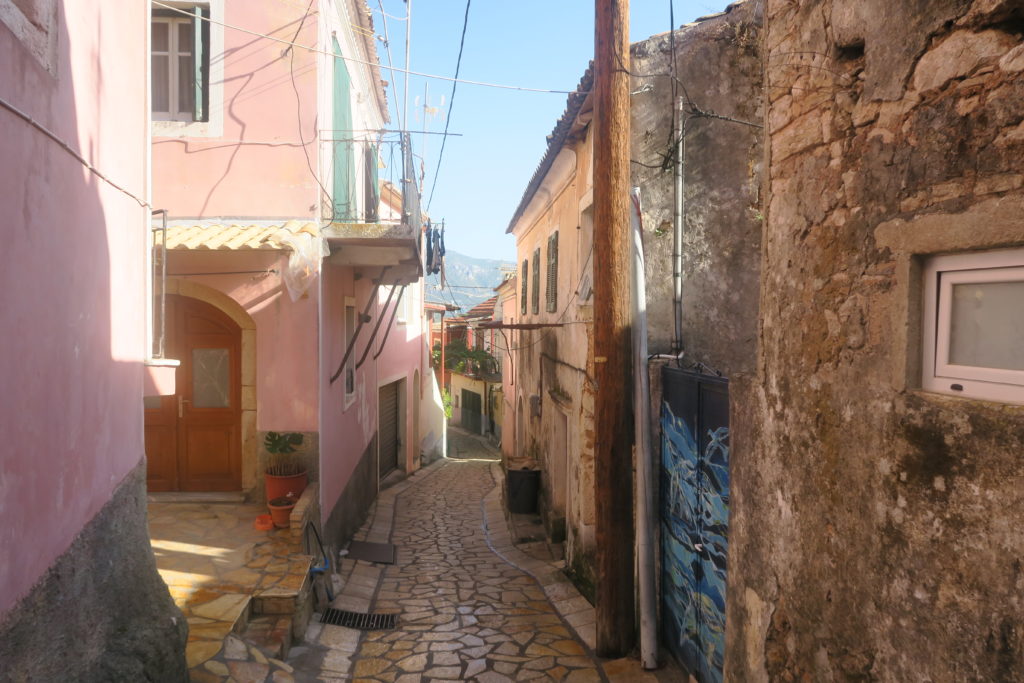

We take pictures of each other with a group of Hungarians. Jó napot kívánok!
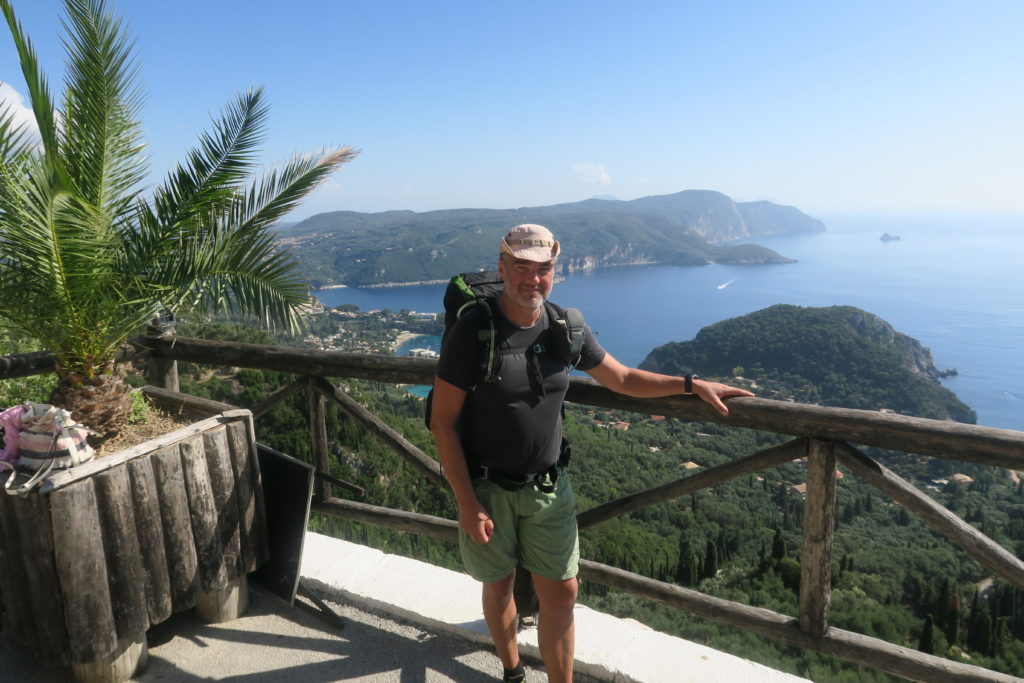
There’s a lizard on my way down the rocks.

And a little further the pair of heroic bicyclists.
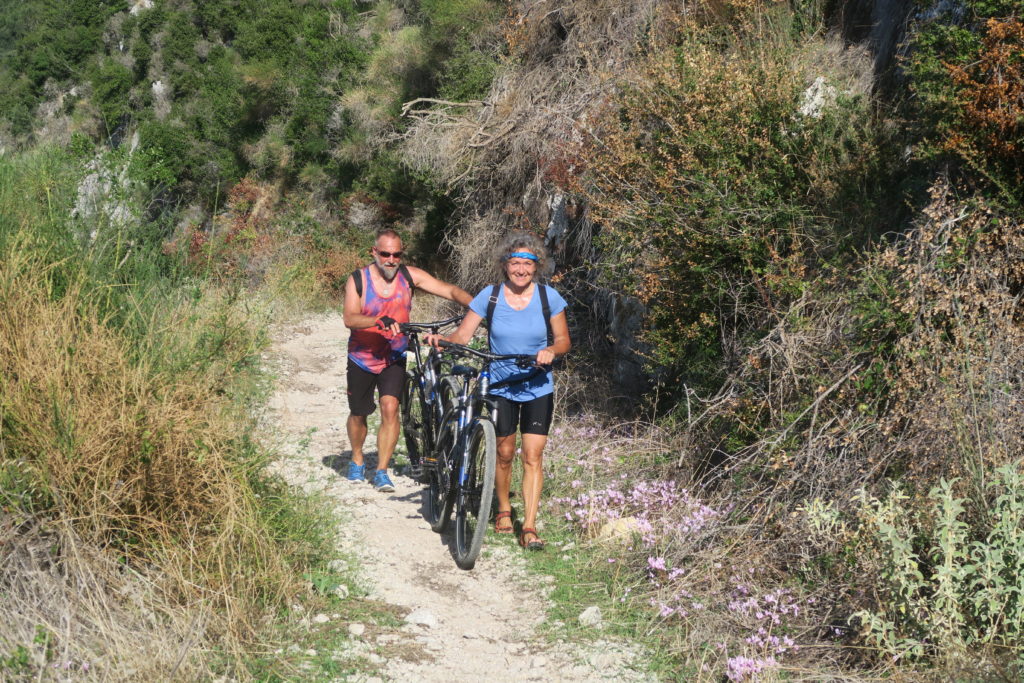
If you’re on Corfu, be sure to visit the Fisherman’s Cabin at Kostas Tavern. This, at first sight, grouch, is very friendly behind its façade and its restaurant, in which it serves the own catches and other local fishermen, has been working since 1971 when it was founded by Kostas’s father. His wife rules the kitchen and prepares the fish perfectly. They serve local wines to fishes.
I stayed there until they close. Kostas talked about why not to go to the euro, for what can Andrea Merkel, how tasty stuffed mocking-bird, how to hunt him, about hunting rifts and Czech weapons in general.
Besides my, already generous enough, orders, he poured to me in the evening another 3/4 litres of wine per venture. Finally, I slept on the terrace of the tavern.
In the morning I got Greek coffee and cake – many thanks Kostas!
If you visit his tavern, be sure to greet him from me!
The storytelling will continue the Corfu Post Trail-the second part.


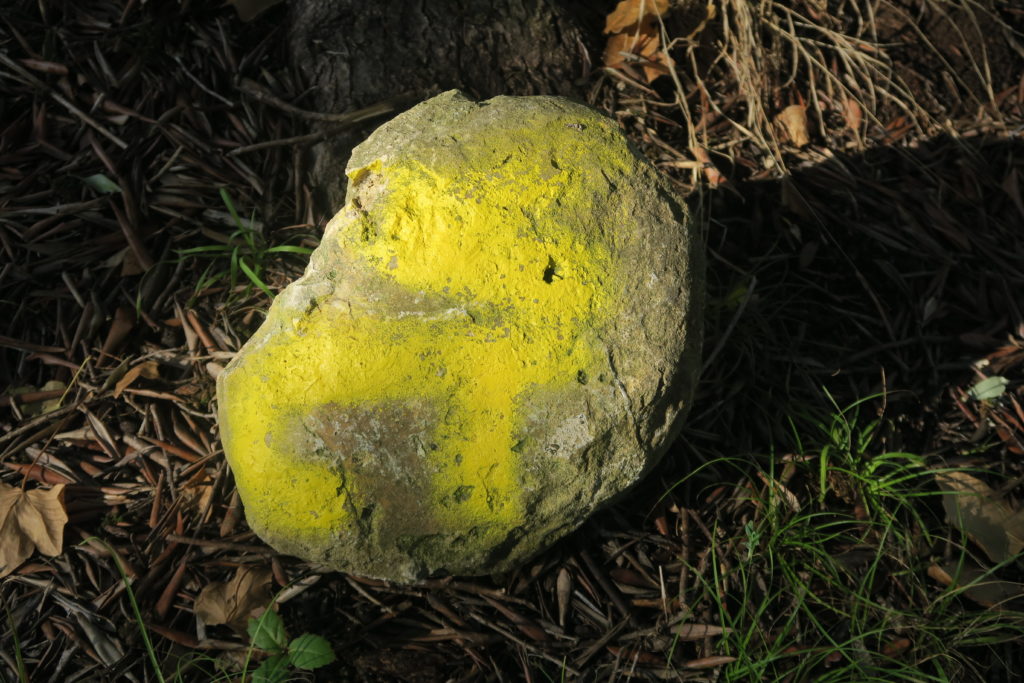







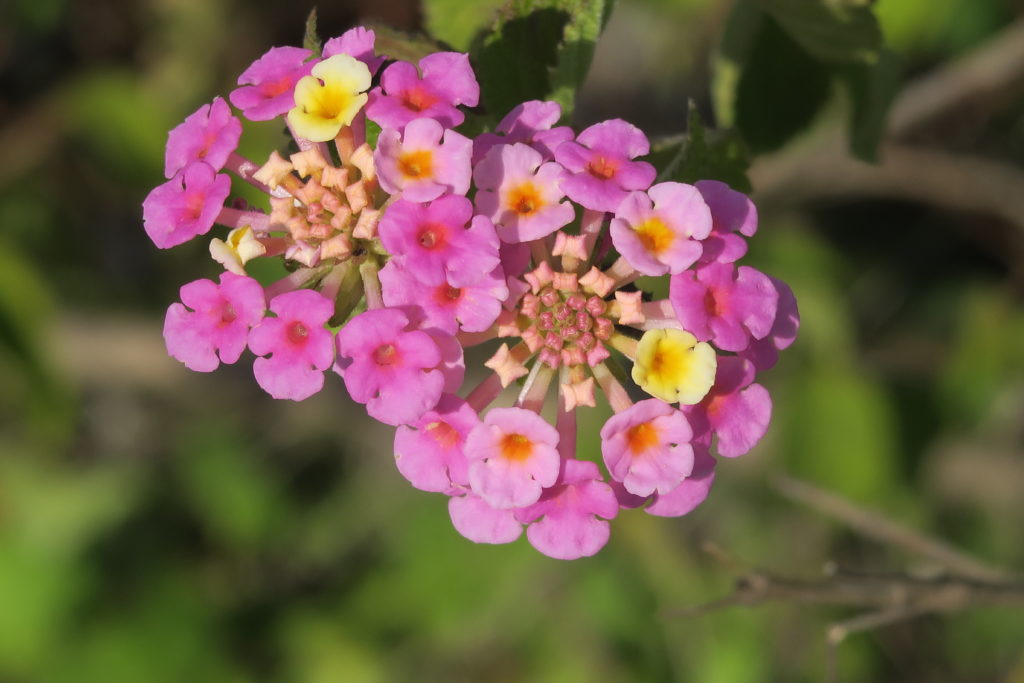

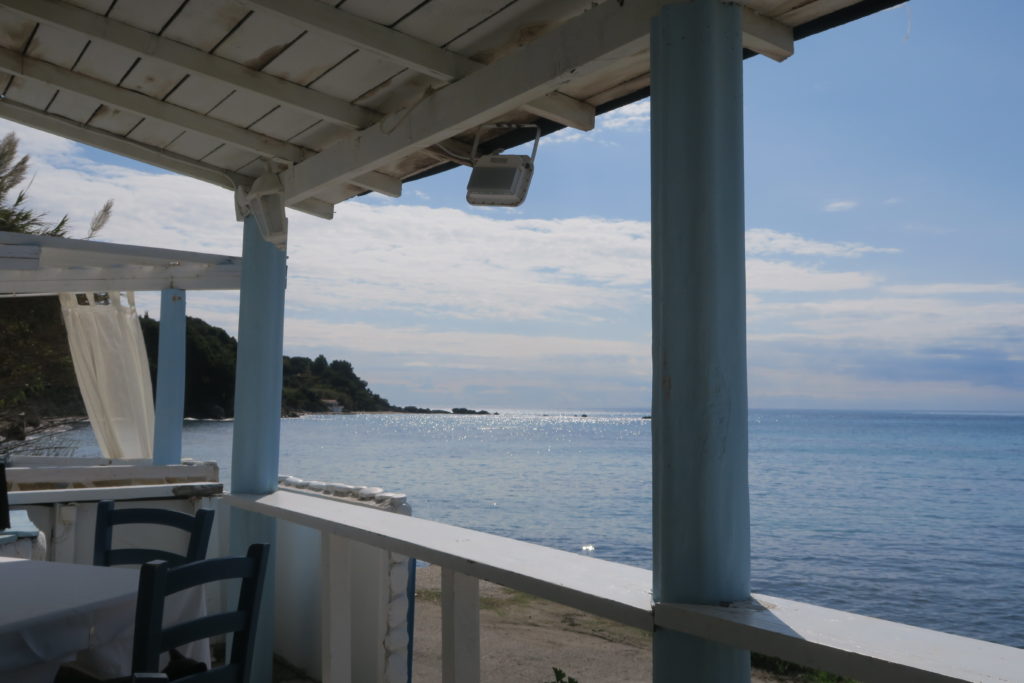

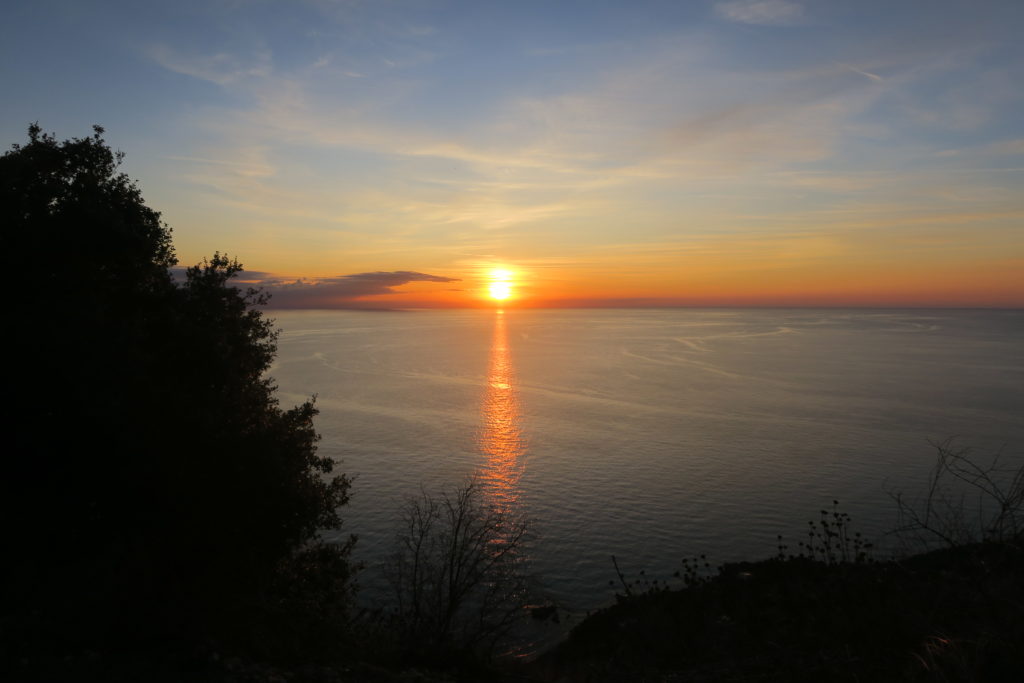
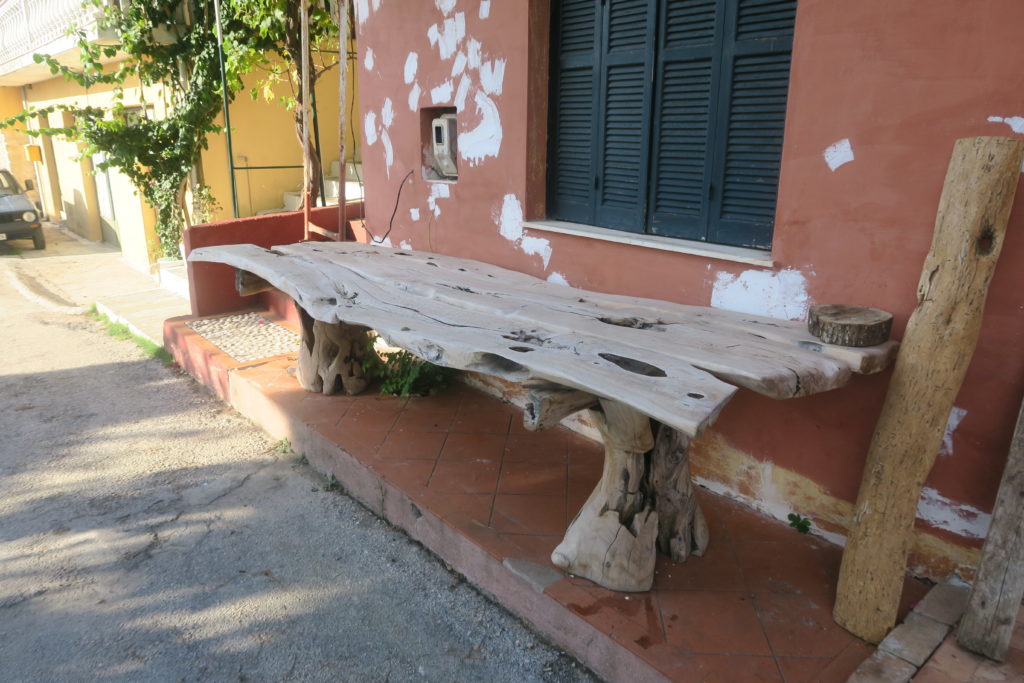


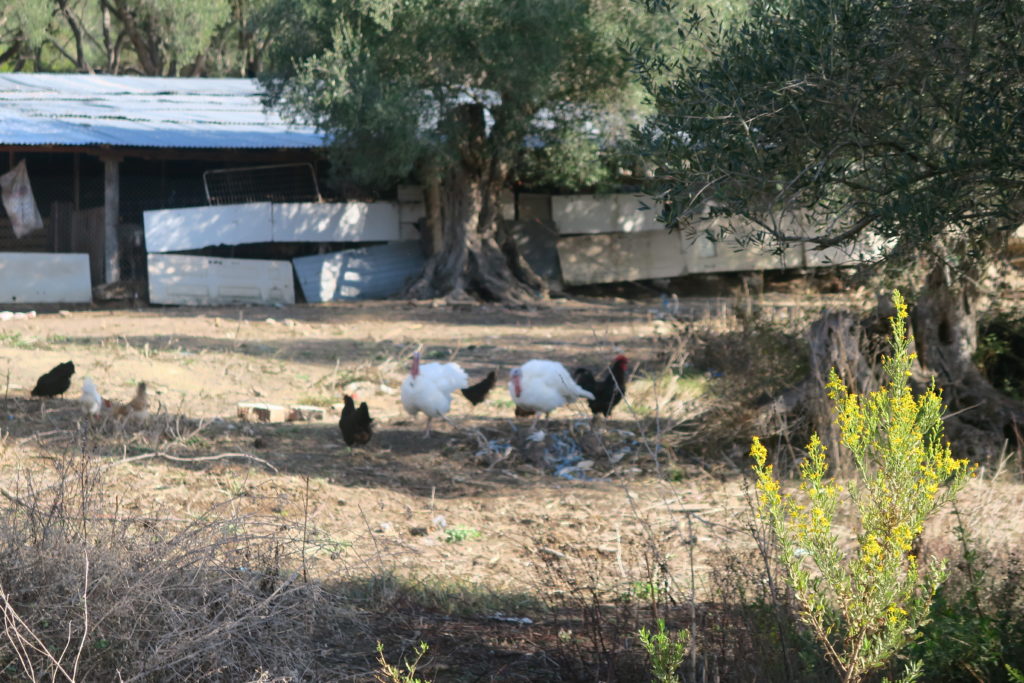


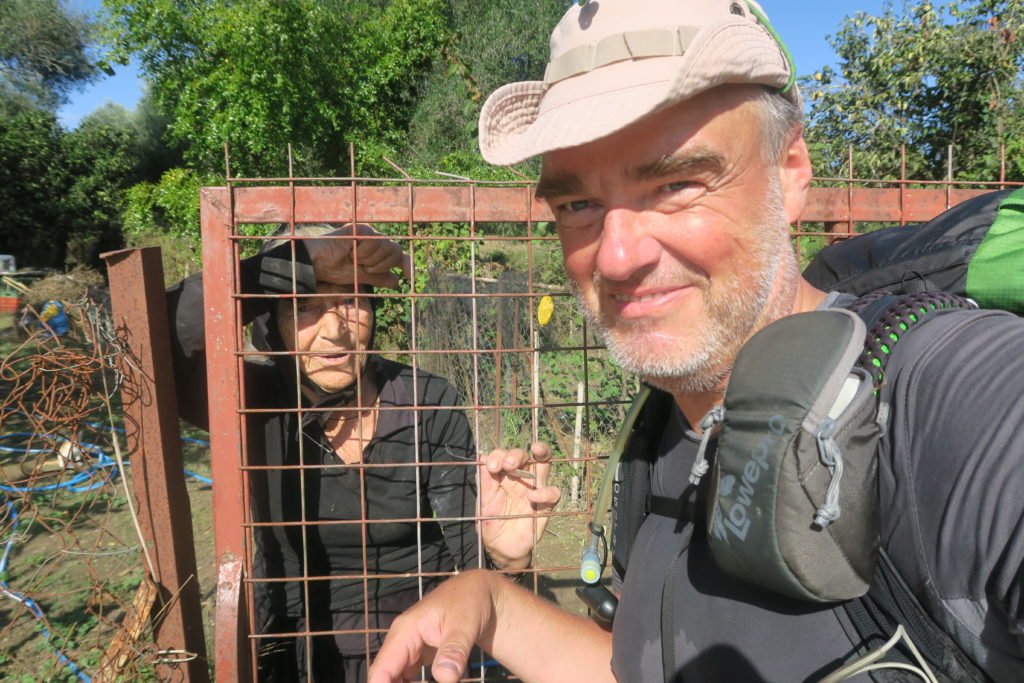





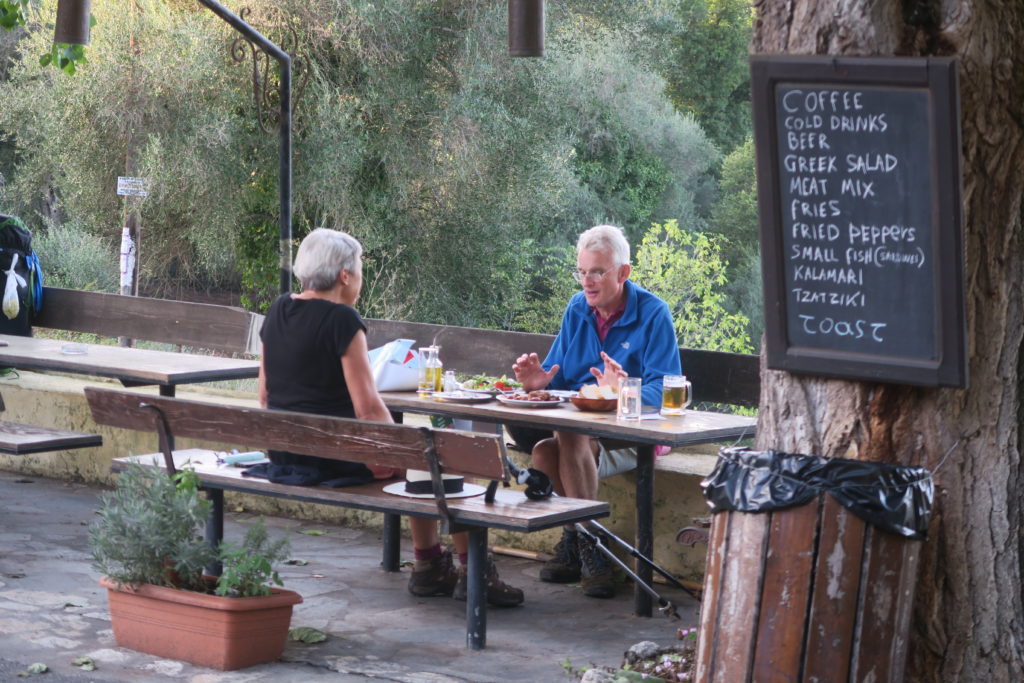
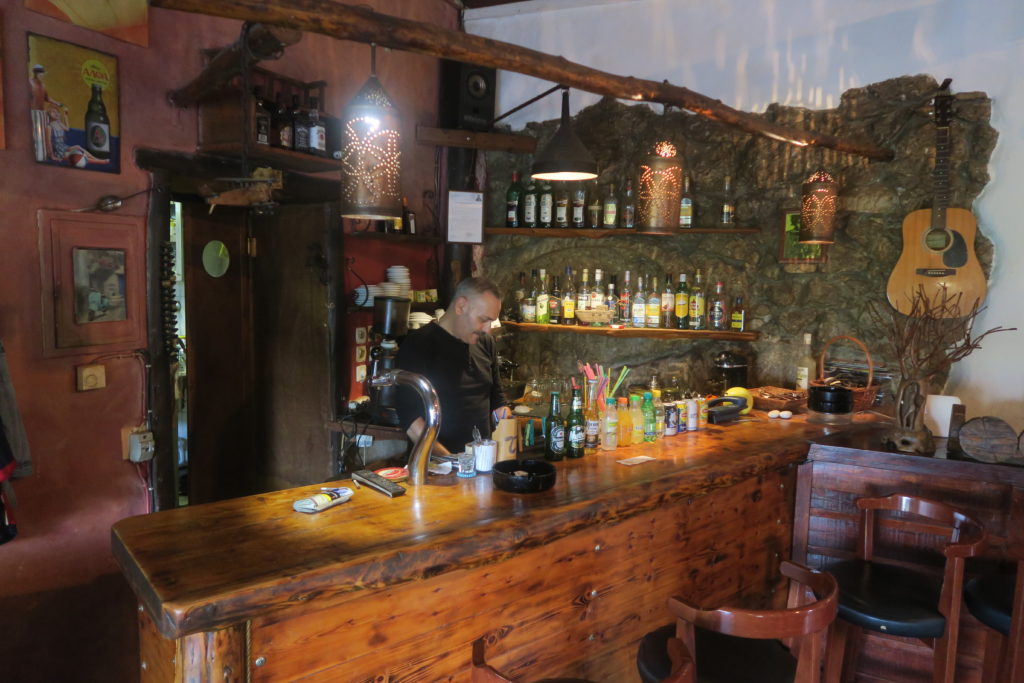


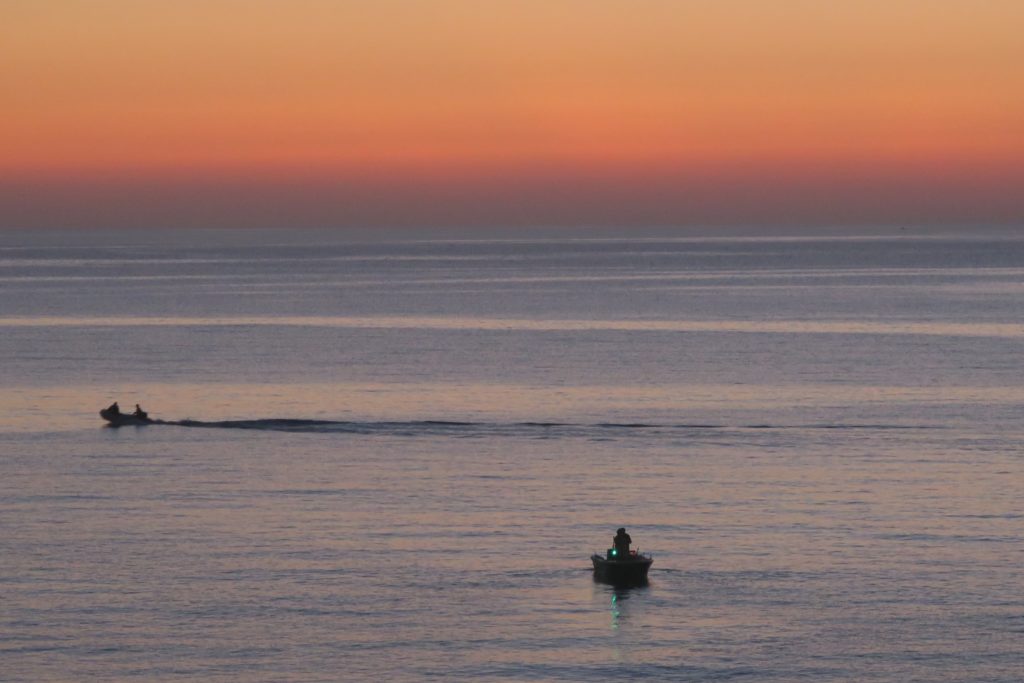
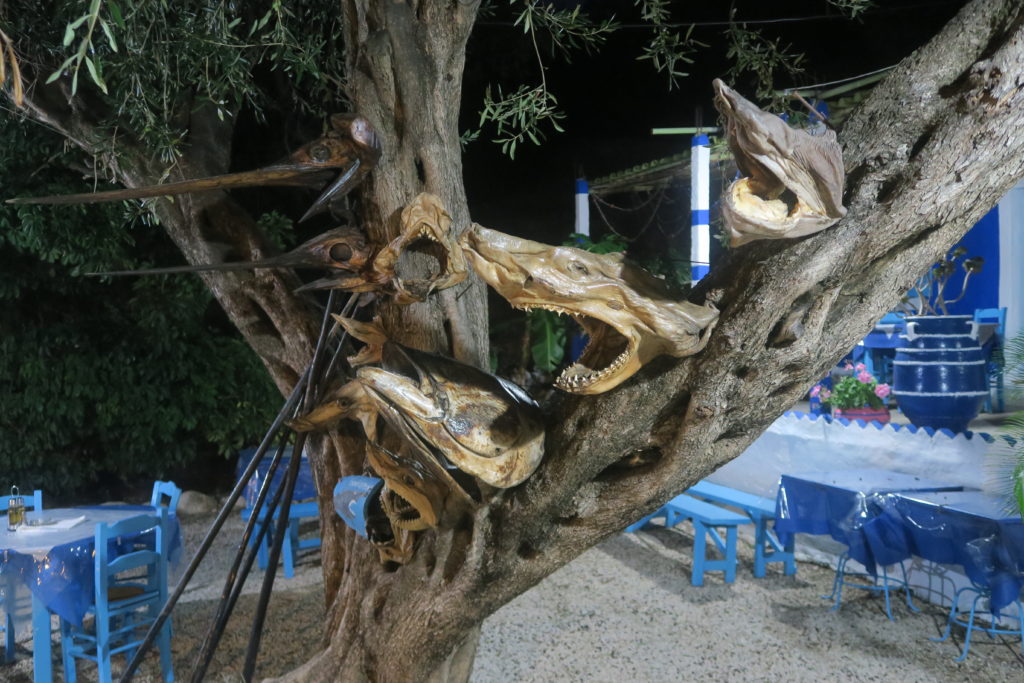
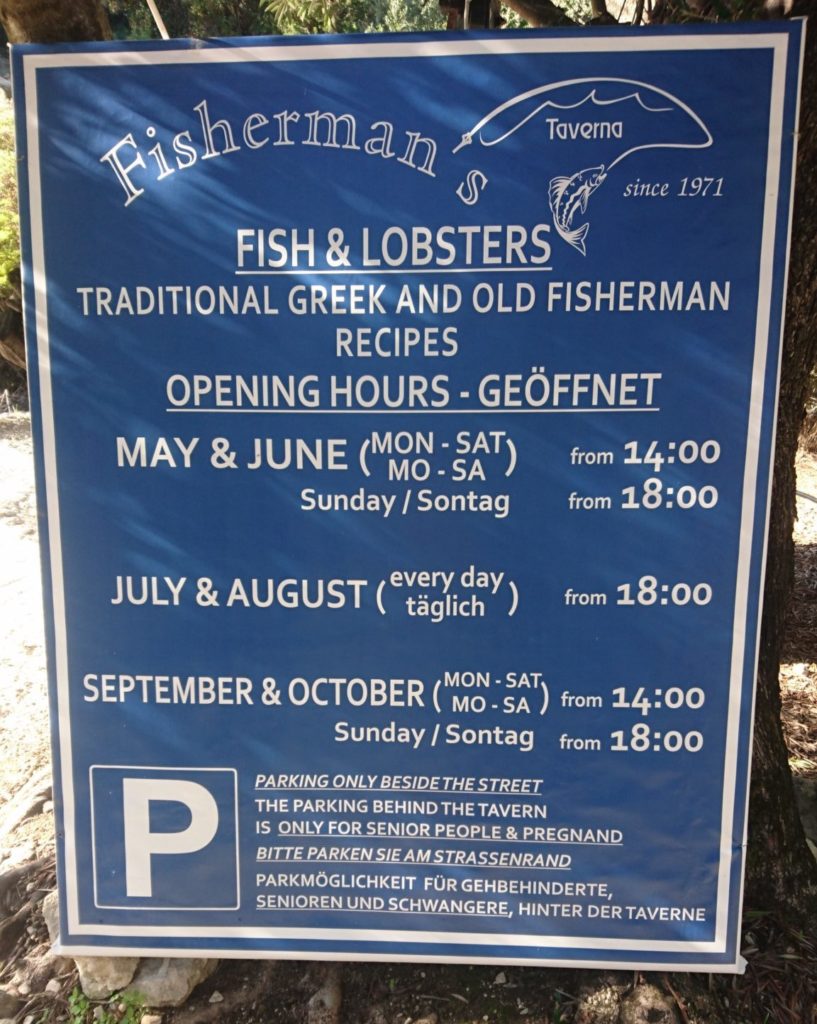



One thought on “Corfu Trail – First part”